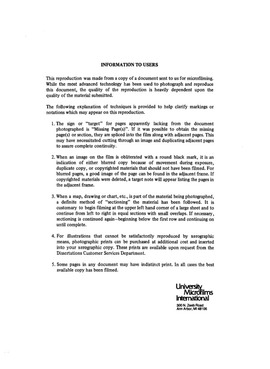| dc.contributor.author | Sexton, J. Franklin, | en_US |
| dc.date.accessioned | 2013-08-16T12:28:49Z | |
| dc.date.available | 2013-08-16T12:28:49Z | |
| dc.date.issued | 1982 | en_US |
| dc.identifier.uri | https://hdl.handle.net/11244/5073 | |
| dc.description.abstract | This study focused on intellectual and cultural patterns that shaped the institutions and value systems of the New Mexican heartland, the central valley of the Rio Grande River between 1885 and 1925. By 1885 three relatively matured cultures--Pueblo, Spanish, and Anglo--coexisted and provided fundamental assumptions about the nature of the universe as well as its human inhabitants. Divergent beliefs led to conflicts over what were acceptable social and political structures for the region. Between 1890 and 1912 complex realignments transformed polemics into accommodation that did not reflect the idealistic energy present within the area. People who held non-materialistic assumptions about the universe and human beings then fashioned an aesthetic vision for New Mexico that sought to define and assert a spiritual reality. That insight evoked a worldview and image of man different from that in vogue among other American and European intellectuals--writer-artists--who dominated the pre and post World War I era. | en_US |
| dc.format.extent | 200 leaves ; | en_US |
| dc.subject | History, United States. | en_US |
| dc.title | New Mexico : intellectual and cultural developments 1885-1925 conflict among ideas and institutions. | en_US |
| dc.type | Thesis | en_US |
| dc.thesis.degree | Ph.D. | en_US |
| dc.thesis.degreeDiscipline | Department of History | en_US |
| dc.note | Source: Dissertation Abstracts International, Volume: 43-11, Section: A, page: 3686. | en_US |
| ou.identifier | (UMI)AAI8306727 | en_US |
| ou.group | College of Arts and Sciences::Department of History | |
